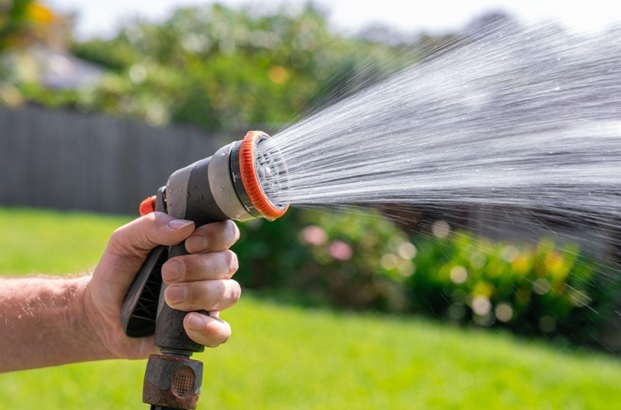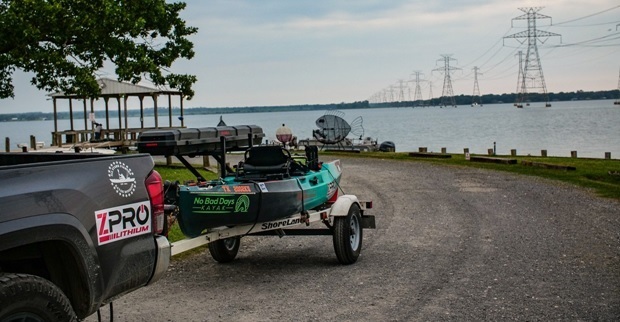Posted by Forrest on Feb 6th 2025
Maintenance and Storage Hacks for Kayak Pedal Drive Systems
Whether you choose a Jackson, a Hobie kayak or an Old Town fishing kayak, chances are it’s going to come with a pedal drive system that’s going to make it easier for you to cover greater distances faster, more efficiently, and in greater comfort than you’d experience with a paddle-only kayak.
With that said, if you’re going to own and use a kayak with a pedal drive system - like a Hobie Lynx or an Old Town fishing kayak, it behooves you to know how to properly care for, clean, and store the drive system so that it continues to power you season after season.
Here are some high-level notes for how to maintain and store a kayak’s pedal drive system to ensure the greatest longevity.
Maintenance Tips and Tricks
Some pedal drives, like the Flex Drive Mark IV of the Jackson Knarr, have gear systems that are completely enclosed in a sealed oil bath and therefore require effectively no maintenance.
Other pedal drive systems are more or less exposed to the elements and will benefit from some routine cleaning and maintenance, especially prior to long-term storage.
With that said, even low-maintenance drive systems like the Flex Drive Mark IV will benefit from a good rinse in freshwater. It’s a good habit to get into to spray off the drive system every time you haul the yak out of the water, and you should absolutely do this after every trip in saltwater.

In fact, even if you aren’t going to drydock the yak, every time you take it in saltwater, you should pull out the drive system and give that a very thorough rinse with freshwater, then allow it to dry. Actually, you can keep the drive system out of the kayak while it remains in saltwater, except while in use.
Rinsing off your pedal drive system will help remove salt deposits as well as mud and muck that can cause corrosion if they’re allowed to remain caked onto the unit. The practice of rinsing the drive unit will also help protect any exposed hardware or fittings against corrosion.
If the drive system has a propeller, make sure you periodically remove the propeller and inspect it for damage, as well as the shaft within the drive system. When you remove the propeller, inspect for an accumulation of mud, muck, vegetation, or fishing line, and clear it out.
With the prop removed, inspect the prop shear pin. These pins can corrode and break over time, even without impacting an object. While this feature preserves and protects the rest of the drive system from damage, if the pin breaks while under way, the propeller will not spin until it is replaced. Therefore it is a good idea to keep a few spares on hand (and with you on the water) in case you ever need to make emergency repairs.
Periodically, you should also inspect all of the hardware and fittings of the pedal drive system. Immediately tighten any hardware or fittings that feel loose or that feel like they are not properly secured.
You should also tighten your crank arms and pedals as soon as they show signs of loosening. Use a pedal or crank wrench for this and remember that some pedals may be reverse-threaded.
If the system is made of powder-coated steel, inspect the powder coat for chips or other wear. Wherever the steel is exposed, there it will be susceptible to corrosion and other damage. You can treat it with enamel or another oil-based sealant to help rectify this issue.
How to Store a Kayak’s Pedal Drive System
In many areas of the country, sit-on-top fishing kayaks equipped with pedal drive systems remain dry-docked while the waterways are icebound. That means a few notes for responsible storage of your pedal drive system are also in order.
First, if possible, remove the drive system from the kayak in question. This will help ensure that the system is not sitting (or frozen in) standing water while it is in storage. Another good practice is to remove all scuppers and ensure that there is no standing water in the kayak at all before you store it for winter.
Both the pedal drive system and the kayak itself should be stored somewhere out of direct sunlight, even during the winter. While sunlight won’t damage steel, and most kayaks and their fittings are made with UV-stabilized polymers, it’s still not a good idea to subject them to all that radiation. Store them in the shade, or otherwise cover them during the winter.
Also, before storing any pedal drive system, make sure to thoroughly clean and dry it, just as you would after you’ve had it in saltwater. This will help prevent corrosion and premature wear and will help ensure that your pedal system will work well for many seasons.
Remember also that if your drive system is missing hardware or some other component, you may be able to purchase parts from the manufacturer, even if the retailer from which you bought the kayak does not have parts. Start with the place you bought the kayak (as the seller may have a good relationship with the manufacturer) and if that fails, reach out to the manufacturer’s customer service department directly.

Have More Questions? Contact Us
This post just scratches the surface of responsible kayak pedal drive system maintenance and storage considerations. Each specific drive system may require different, unique notes, per the manufacturer’s recommendations. If you have questions consult the literature that came with your kayak or of course reach out to us and we would be more than happy to help.
Otherwise, if you are here for an Old Town fishing kayak with a pedal drive system to set you up for success in both fresh and saltwater next season, take a look through our online catalog and get in touch with us if you have questions or want personalized recommendations.
We also carry a variety of inexpensive fishing kayaks for sale that represent excellent value for the price. Take a look through these before you make a decision because often you don’t need to pay more to get excellent performance for a high-quality fishing kayak at an affordable price.

